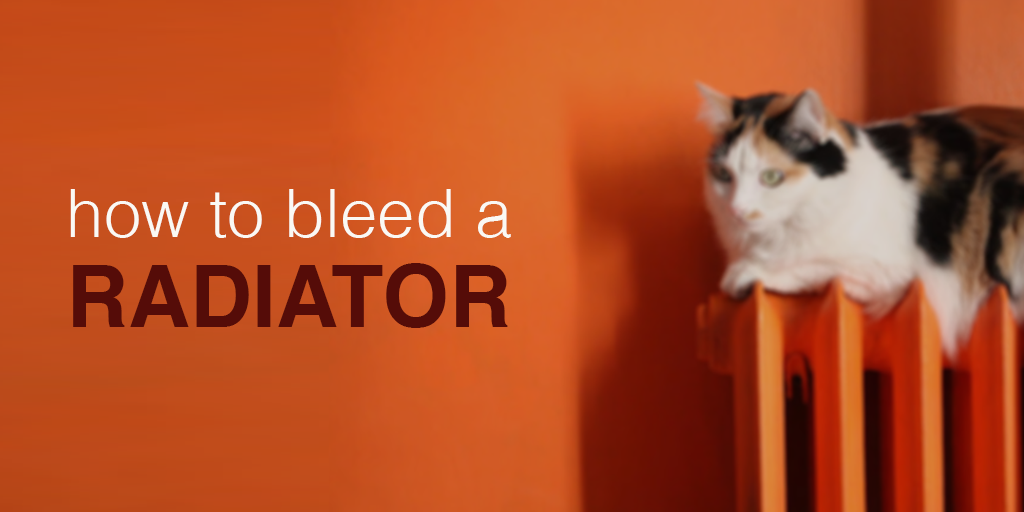5 Simple Steps on How to Bleed a Radiator

Ever thought that the radiators in your home aren’t quite kicking out as much heat as they used to? Maybe even have some cold spots along the top of the radiators themselves? Radiators that aren’t fully doing their job are a quick way to lose a lot of energy, which therefore results in some unnecessary costly bills. There’s no need to worry just yet about having to replace the system, a simple job that you can do yourself is to ‘bleed’ them and get everything back to full working order.
The most likely cause for problems in a radiator is due to trapped air or gas that prevents the hot water from fully circulating around and heating them properly. By ‘bleeding’ a radiator it essentially releases that trapped air and frees the water up, getting it to where it needs to be, allowing you to heat your home once again.
Here’s a handy step-by-step guide on how to bleed a radiator yourself. As with any DIY work, get yourself prepared and take extra caution when dealing with the hot water that could be involved.
STEP 1: TURN UP THE HEAT:
Turn on the heating in the house either by the main thermostat, or by each radiator individually. You want to set everything up to the highest setting (they won’t be on for long), to get ready for the next steps by getting the pressure built up inside in order to force the air out. Wait until you’re sure that enough time has passed to adequately heat each radiator and then switch everything off again.
STEP 2: FIND THE CULPRIT(S):
Once you’ve switched the radiators off, it’s time to carefully run a hand over each one to identify if there are any cold spots. These cold spots will typically be along the top of the radiator and are an indicator of being in need of some attention. It’s most likely that air or gas will be trapped in the highest radiator in the house but it’s worth checking each and every one to be certain there isn’t a wider issue.
(Bear in mind that if any of the radiators are completely cold, that could be a sign of a much larger problem such as a build-up of ‘sludge’. Consult a plumber if that’s the case, and also if you discover any leaks)
STEP 3: GET YOURSELF A RADIATOR KEY:
Once you’ve identified which of the radiators need bleeding (and once everything has had time to cool down enough to have a tinker with), it’s time to find something to open up the radiator’s bleed valve. You can find the bleed valve at the top edge of the radiator, it will look like a large bolt with a square bit inside or on top. You may have to buy yourself a special radiator key - these are available from any DIY stockist or plumbing supply specialist and come in different sizes (so make sure you check beforehand.) Take note that some modern radiators valves can be opened with a flat-head screwdriver.
STEP 4: OPEN THE VALVES:
Once again, make sure that everything has cooled down completely. This isn’t just as a safety precaution, it’s because a heating system that is left on can introduce more air or gas in to the system meaning, that you’re not going to get anywhere.
Once certain, get a towel or bowl ready to be placed under the valve to catch the water that’s going to leak out. Take the radiator key (or screwdriver) and place it in the square hole or groove and slowly turn it anti-clockwise about half a turn until you hear the hissing of the gas or air escaping.
When the hissing stops, water will start to drip out of the valve. Once the water has changed from spluttering to a steady stream, it means that the trapped air has gone and the radiator is bled. Now tighten the valve in the opposite way in order to seal it up, and wipe away any water that’s been spilt.
To properly stabilise the pressure and ensure that all the excess air has escaped the heating system, you’d ideally follow this step with every single radiator in the house. For a well-maintained system you’d give the radiators a bleed every now and then, preferably at least once a year.
STEP 5: CHECK EVERYTHING:
We hope you found our guide: how to bleed a radiator to be helpful in your energy saving efforts. One final hint: whenever you bleed a radiator you may find that the pressure in the boiler has dropped a little. Check the pressure gauge (which should read approximately 12-15 psi) and if it’s a touch low then you can top it up yourself using the filling loop lever or tap (but as always, if necessary, get a professional in).
Turn the system on again, wait for it to heat up and carefully check each radiator for cool spots.
And that’s it! Your radiators should be working to their full capability once again.

